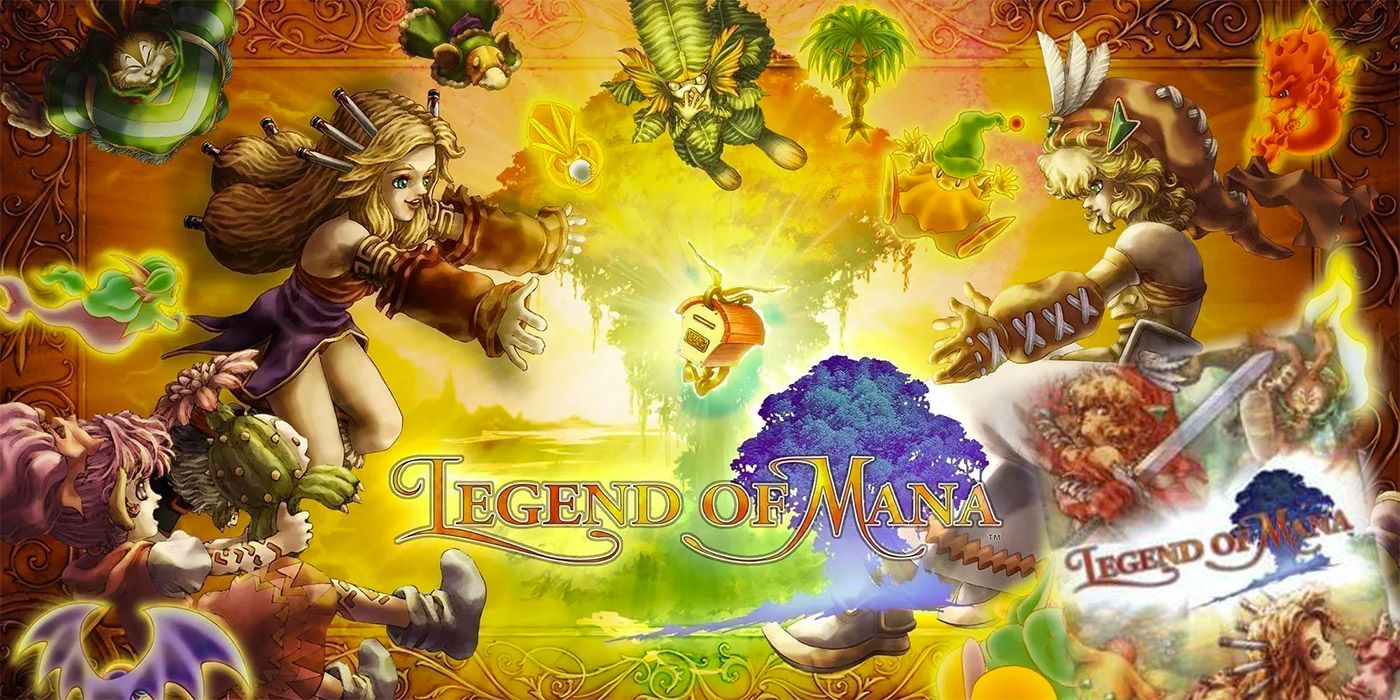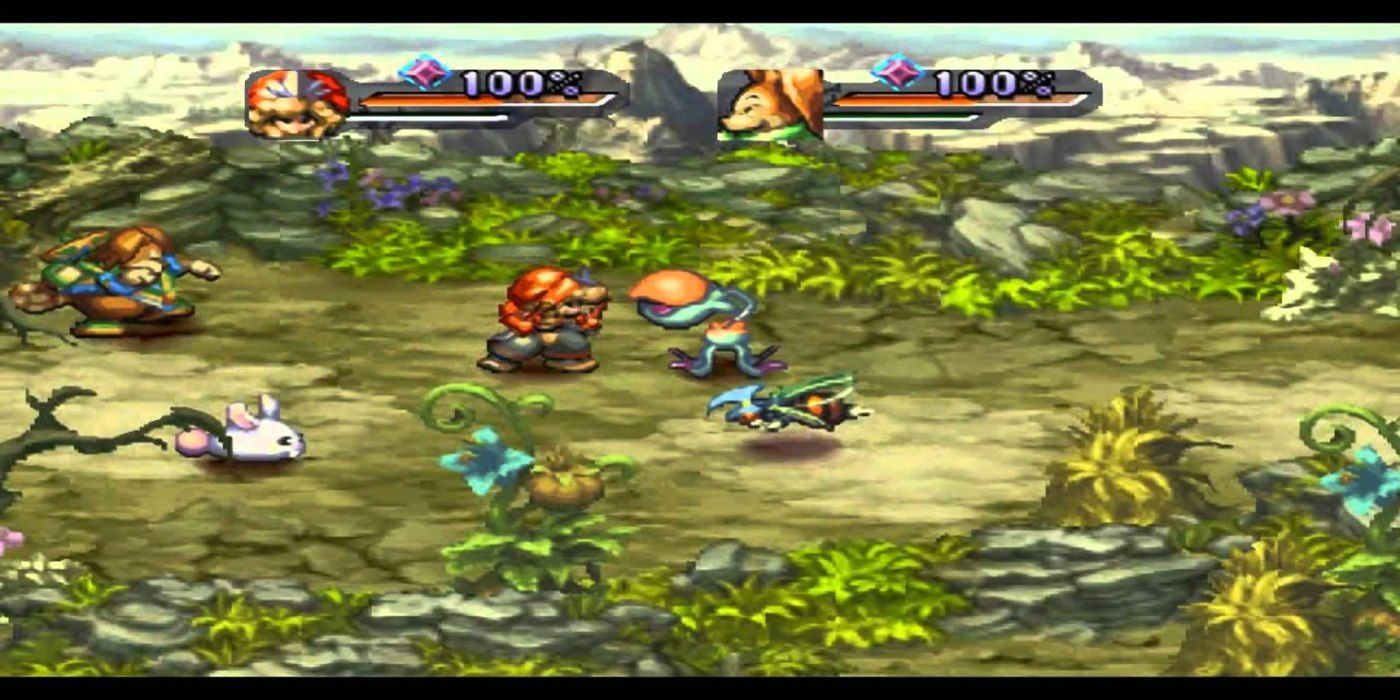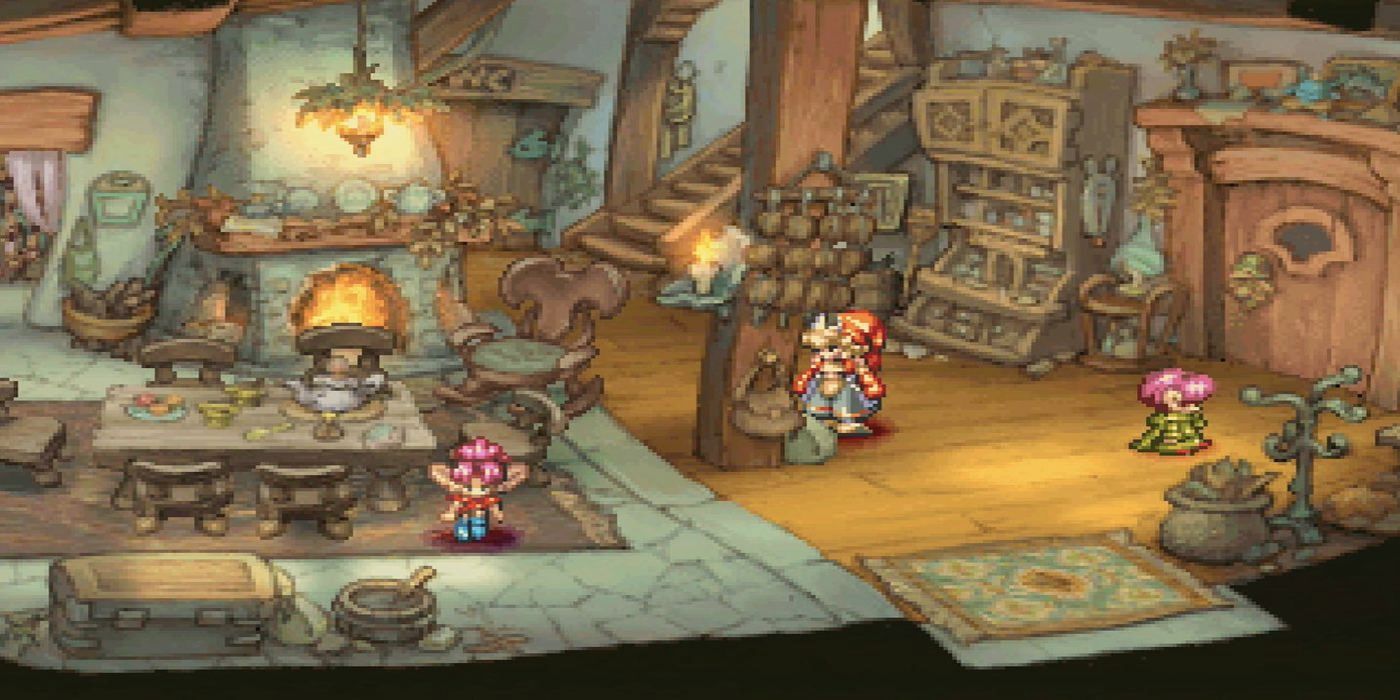
Legend of Mana is the fourth and final game of the Mana RPG series. A slight departure from its past games, it tells several stories through disconnected quests that are complemented by several in-game mechanics. Often overlooked, even compared to the later World of Mana series, Legend of Mana is a hidden gem that is finally getting the spotlight once more.
Released in 1999 for the PS1, Legend of Mana came during a time of experimentation at Square. While it followed many themes from the previous three Mana titles, it abstracted the story through three main arcs, a multitude of minor arcs, and a finale. Overall, 67 different quests, not all mandatory to complete the game, were available for players to explore. Legend of Mana also featured a modular world map with players placing artifacts down to introduce new areas.
RELATED: The Legend of Mana Coming to Switch in June
This slight deviation from the previous three Mana games garnered mixed reviews from both players and critics, but the music and hand-painted backdrops were highly praised. Still, the disjointed story turned many away from the game, especially those seeking an experience similar to Secret of Mana and Trials of Mana. What compounded the issue is that the Legend of Mana did not give players much to go on, leaving many to see out strategy guides and walkthroughs so they could enjoy the entire experience.
Even with mixed reviews, Legend of Mana made Weekly Famitsu's list of 100 top PlayStation games of all time in 2000. The game was re-released in 2002, as part of the PS1 Books best-sellers series in Japan, and in 2006 as part of Square Enix's Ultimate Hits collection. This year ,it will receive an HD remaster with updated visuals and an enhanced, rearranged soundtrack for the PC, PS4, and Nintendo Switch, the last of the original Mana series to get such a treatment.

One of the greatest aspects of Legend of Mana is the amount of depth the game has. While on the surface, it seems like a simple adventure with fairytale-like characters, there are subtle nuances to every character that range from joyful and sweet to sometimes dark and a bit disturbed. The overall theme, however, focuses on the philosophical ideals of life, love, and rebirth. Things that many video games of the era did not delve far into.
Legend of Mana's depth comes from more than just its interconnected stories and characters. It also features a robust item creation system, an orchard where players can grow various fruits, the ability to raise and breed monsters, and a modular map that is more important to the game than it lets on. The order in which players complete quests also affects whether other quests become available to play, meaning that there are areas of the story that may not be explored during a single playthrough.
The pace of Legend of Mana is completely up to the player. The game never feels like it is rushing players to a certain point, allowing them to explore the world's richness at their leisure. Many of the game's quests are completely optional, offering small looks into the life of everyday characters in the world of Fa'Diel. It is quite possible to lose hours focusing on growing the orchard's best fruits to raise the best monsters in the corral or finding the best materials to create even more powerful weapons.
When players are ready to move along, Legend of Mana clips by at a good place, keeping a good mix of action and story. There is always something to do, new things to discover, and new people to help through their various problems. Players only need to complete one of the three major story arcs to trigger "The Legend of Mana," which is the game's finale.

Each of Legend of Mana's three main story arcs presents players with different themes. The three arcs include the Faerie arc, the Dragon Emperor arc, and the Jumi arc. Each of these arcs is a self-contained story, though each ties into the world's overall lore. The minor story arcs and subquests in Legend of Mana further expand upon the main arcs' themes, creating rich lore full of emotional depth.
The first arc, the Faerie arc, is a love story revolving around four childhood friends: Matilda, Irwin, Daena, and Escad. Irwin, a half-demon, tries to destroy the world because it prevents him from being together with his true love, Matilda, a holy leader. Deana and Escad are caught in the middle, and depending on how the player makes choices during the quest, one of them pays the ultimate price. The Dragon Emperor arc focuses on two siblings, Larc and Sierra, that serve different dragons opposite a great war. It delves deep into the sibling's love for each other and duty to their masters. Each wish for their side to win the war without hurting the other.
The Jumi arc deals with a dying race, the Jumi, who are hunted for their jewel hearts. Focusing on Elazul and Pearl, the player helps them try and save the Jumi from extinction and a jewel hunter who is out to steal their hearts to line her pockets. Throughout each of Legend of Mana's 67 quests, players will ride an emotional rollercoaster along with twelve recruitable NPCs and a score of others. In the end, they will climb the Tree of Mana which suffers from a rot deep in its heartwood, and try to breathe life into a once-dead world.
The Legend of Mana offers so much more to players than any previous games in the Mana series. While each game that came before is excellent in its own right, they were just a stepping stone that leads to a true masterpiece. Legend of Mana is a must-play game for any fan of action RPGs. Gamers should not let its deviation from the previous Mana games keep them from enjoying this rare gem.
Legend of Mana was originally released on the PlayStation and will release for the PC, PS4, and Nintendo Switch on June 24, 2021.
MORE: Trials of Mana Passes Huge Sales Milestone for Square Enix

